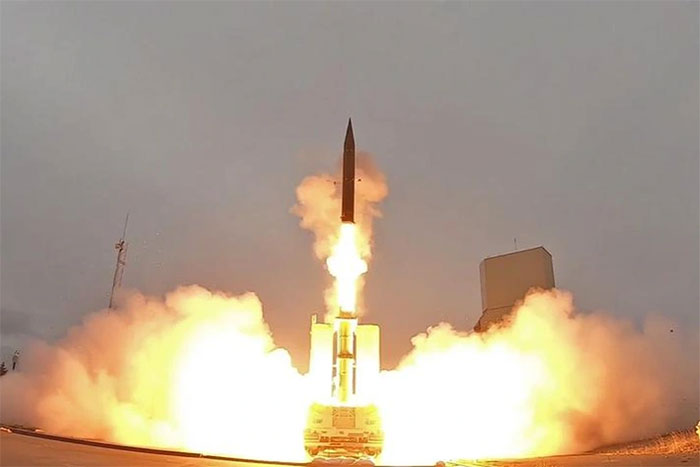At the beginning of last week, Israel’s Arrow 2 missile system reportedly intercepted and destroyed a ballistic missile that had a trajectory outside of Earth’s atmosphere.
Arrow System Back in Action
The surface-to-surface missile (SSM) is a type of missile designed to be launched from ground platforms, such as military bases, targeting locations at various distances.
These missiles can serve multiple functions, such as carrying explosives to attack enemy targets, transporting nuclear warheads, or even launching cruise missiles.

Arrow anti-ballistic missile launch system. (Photo: Gagadget).
The Arrow 2 is a ballistic missile defense system developed by Israel in collaboration with the United States. Its history traces back to the Gulf War in 1991.
At that time, Israeli cities faced the threat of Iraq’s Scud missiles. This situation led the Israel Defense Forces (IDF) to establish the Homa organization, also known as “Fortress”, aimed at creating an effective missile defense system to protect the nation.
This system is primarily designed to intercept and destroy incoming ballistic missiles, including medium-range missiles, to safeguard Israel from potential threats.
One of its key features is the ability to intercept ballistic missiles at very high altitudes, distinguishing it from missile defense systems designed to operate within Earth’s atmosphere.
According to Haaretz, on October 31, the Israel Defense Forces (IDF) reportedly used this defense system for the second time in 25 years to shoot down a missile produced by Iran. The destroyed missile was a Qadar, an upgraded version of the Shahab 3 missile.
Intercepting in Space
According to The Telegraph, the missile traveled nearly 1,600 km before the missile defense system intercepted it. Details about the incident are scarce, but it is believed to have occurred above the official boundary between Earth’s atmosphere and outer space, known as the Kármán line, located 100 km above Earth.
According to Harvard-Smithsonian astronomer Jonathan McDowell, there have been several previous instances of intercepting missiles at this boundary of space. However, all prior cases involved intercepting targets that were missiles launched by the same party for testing purposes.
This marks the first time a missile successfully intercepted an incoming missile from an enemy in space. In other words, this is the first military battle in space.
It should be noted that the Outer Space Treaty (OST) prohibits the placement and use of nuclear weapons or other weapons of mass destruction in Earth’s orbit, on celestial bodies, or deploying them in space.
However, the OST does not explicitly ban conventional weapons, nor does it mention missile interception in space. Therefore, the Arrow system’s destruction of a conventional ballistic missile, even if it occurred above the Kármán line, seems not to violate the rules set by the OST.


















































